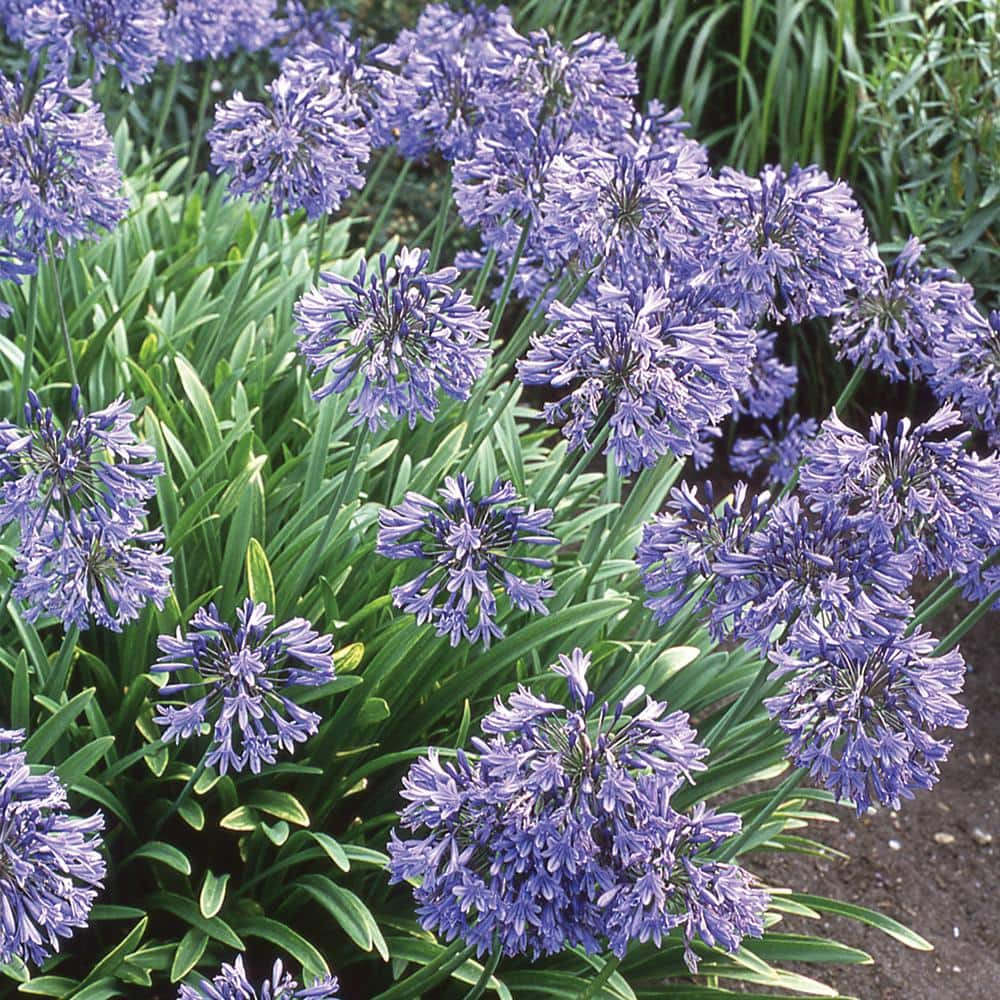Spectacular Agapanthus: Enhancing Your Yard's Beauty
Spectacular Agapanthus: Enhancing Your Yard's Beauty
Blog Article
Understanding the Art of Agapanthus Treatment: Necessary Steps for Healthy And Balanced Growth and Vibrant Blooms
In the world of cultivation, the growing of agapanthus stands as a rewarding undertaking for those that look for to support these elegant flowering plants. From selecting the appropriate range to understanding trimming methods, the trip towards cultivating prospering agapanthus plants is diverse and holds the essential to unlocking the full possibility of these organic treasures.

Picking the Right Agapanthus Selection

When choosing the best Agapanthus selection for your yard, consider aspects such as environment viability, flower color, and development routine. Additionally, consider the climate in your area to make sure the Agapanthus variety you select can prosper in your certain problems. Comprehending the growth behavior of different Agapanthus ranges is essential for appropriate placement within your yard.
Ideal Planting Conditions
Thinking about the optimal environmental requirements is necessary for successful Agapanthus farming. Agapanthus plants are sensitive to cold temperature levels and ought to be protected from frost throughout wintertime months.
To make certain healthy growth and dynamic flowers, plant Agapanthus light bulbs at a deepness of about 2-4 inches and space them 8-12 inches apart. Including raw material, such as garden compost, to the dirt can enhance drainage and fertility, advertising durable origin growth. Mulching around the base of the plants helps retain dampness and reduces weed development. Normal watering is essential, especially during the growing season, to maintain the dirt regularly damp but not waterlogged.
Watering and Fertilizing Tips
Keeping appropriate wetness degrees and giving vital nutrients are crucial aspects in the treatment routine for Agapanthus plants. When it comes to sprinkling Agapanthus, it is essential to strike a balance. These plants favor consistently moist dirt yet are prone to root rot if overwatered.
Feeding Agapanthus is important for advertising healthy development and prolific blossoms. Use a balanced plant food, such as a 10-10-10 formula, in the early spring as new growth emerges. Repeat this application every 6-8 weeks throughout the expanding period. Prevent too much fertilizing, as it can lead to lush foliage at the expense of flowers. Always comply with the producer's guidelines for correct dilution and application methods. By adhering to these watering and fertilizing ideas, you can guarantee your Agapanthus plants flourish and produce vibrant, durable flowers.
Trimming Methods for Agapanthus
Trimming Agapanthus plants at the suitable times and with correct strategies is crucial for maintaining their health and wellness and promoting optimal growth and flowering. The excellent time to prune Agapanthus is in late wintertime or early springtime prior to brand-new growth arises.
For flowered stems, wait until the blossoms have actually perished and after that cut them back to the base. This not only cleans up the plant's appearance yet likewise urges the advancement of brand-new flower buds. Deadheading spent flowers can likewise redirect the plant's power into generating even more blossoms instead of establishing seeds. However, if you intend to accumulate seeds for breeding, leave some flowers to fully grown and dry on the plant.
Remember to use tidy, sharp tools to make accurate cuts and minimize the danger of presenting conditions. Agapanthus. Normal trimming will aid keep your Agapanthus looking neat and healthy and balanced while guaranteeing a bountiful screen of attractive blooms
Handling Common Pests and Conditions
After making sure correct trimming techniques for Agapanthus, it is vital to attend to common pests and illness that can affect the health and vigor of these plants. Agapanthus plants are usually sturdy however can still drop victim to particular problems. One usual pest that affects Agapanthus is the Agapanthus gall midge. This little, orange fly lays its eggs in the vegetation, leading to altered development and blossom buds that fail to open. To fight this pest, prune and ruin any type of affected plant parts and take into consideration making use of insecticidal soap.
An additional usual problem is fungal leaf spot, which offers as dark sores on the leaves. To avoid fungal illness, make certain excellent air click now flow around the plants, stay clear of above watering, and eliminate any contaminated leaves without delay. In addition, Agapanthus plants can struggle with root rot if they are planted in poorly draining pipes dirt. To stop this, plant Agapanthus in well-draining dirt and avoid overwatering. By being vigilant and taking prompt action against parasites and diseases, you can aid your Agapanthus plants thrive and generate lively blooms.

Conclusion
Finally, mastering the art of agapanthus treatment involves selecting the best range, offering suitable planting conditions, proper watering and feeding, appropriate trimming techniques, and addressing typical pests and illness. By adhering to these important steps, you can ensure healthy growth and vibrant flowers for your agapanthus plants. Keep in mind to frequently check and preserve your plants to promote their her comment is here overall wellness and longevity.
To guarantee healthy development and lively flowers, plant Agapanthus light bulbs at a depth of concerning 2-4 inches and space them 8-12 inches apart. By following these watering and feeding ideas, you can ensure your Agapanthus plants thrive and create vivid, durable find out here now flowers.
One usual bug that affects Agapanthus is the Agapanthus gall midge. Furthermore, Agapanthus plants can experience from origin rot if they are grown in badly draining pipes soil. By following these necessary actions, you can make sure healthy development and vibrant flowers for your agapanthus plants.
Report this page